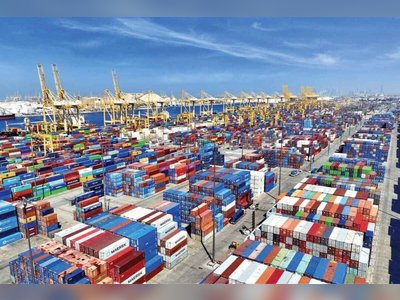Challenges in Protecting 30% of Oceans by 2030
Global commitments face significant hurdles as protected marine areas currently account for less than 10% of the world’s oceans.
Efforts to meet the global target of protecting 30% of the oceans by 2030 are encountering substantial obstacles.
Currently, designated marine protected areas (MPAs) account for less than 10% of the global ocean, with numerous areas existing merely on paper.
Lance Morgan, a marine biologist and director of the Marine Conservation Institute in Seattle, highlights the difficulties in achieving the 30% protection goal.
He stated that the target would require more time, particularly as certain nations, including the United States, are reversing decades of marine conservation efforts.
This includes a decision made by former President Donald Trump in April 2020, which allowed commercial fishing in significant portions of protected marine areas in the Pacific Ocean.
In 2022, 196 countries committed to the goal of protecting 30% of the ocean under the Kunming-Montreal agreement.
However, the latest count indicates that the 16,516 MPAs established by various governments effectively protect only 8.36% of the oceans.
The conditions of these protected areas vary considerably, with some imposing complete fishing bans while others lack stringent regulations on fishing activities.
Joachim Claudet, a researcher specializing in social-ecological marine sciences at the French National Centre for Scientific Research, noted that only one-third of these areas worldwide offer levels of protection that can be expected to yield real benefits for fisheries.
Daniel Pauly, a fisheries science professor at the University of British Columbia in Vancouver, pointed out that MPAs were initially proposed not solely for biodiversity conservation but also to enhance fish catches.
He explained that a well-protected marine area can export fish to unprotected regions, emphasizing that this should be the primary justification for establishing MPAs.
Research indicates that when fishing is halted in these areas, fish populations can grow, reproduce, and increase in numbers, a phenomenon that has been well-documented in various scientific publications.
For instance, Hawaii, which contains one of the largest marine protected areas in the world—three times the size of France—prohibits all forms of fishing.
A study published in the journal Science in 2022 reported a 54% increase in yellowfin tuna catch rates along the boundaries of this marine protected area.
Pauly indicated that this MPAs are now at risk due to policies enacted during Trump's administration, which previously facilitated the recovery of tuna stocks.
Claudet noted that for similar beneficial impacts to be realized in other areas, they must be strictly protected, with fishing bans enforced in at least part of the zones.
However, areas that are entirely or highly protected currently represent only 2.7% of the oceans, with most of these located in overseas territories, far from the regions most affected by human activity.
Conversely, in Europe, 90% of marine protected areas remain vulnerable to bottom trawling, according to Alexandra Cousteau, a representative of the non-governmental organization Oceana.
Currently, designated marine protected areas (MPAs) account for less than 10% of the global ocean, with numerous areas existing merely on paper.
Lance Morgan, a marine biologist and director of the Marine Conservation Institute in Seattle, highlights the difficulties in achieving the 30% protection goal.
He stated that the target would require more time, particularly as certain nations, including the United States, are reversing decades of marine conservation efforts.
This includes a decision made by former President Donald Trump in April 2020, which allowed commercial fishing in significant portions of protected marine areas in the Pacific Ocean.
In 2022, 196 countries committed to the goal of protecting 30% of the ocean under the Kunming-Montreal agreement.
However, the latest count indicates that the 16,516 MPAs established by various governments effectively protect only 8.36% of the oceans.
The conditions of these protected areas vary considerably, with some imposing complete fishing bans while others lack stringent regulations on fishing activities.
Joachim Claudet, a researcher specializing in social-ecological marine sciences at the French National Centre for Scientific Research, noted that only one-third of these areas worldwide offer levels of protection that can be expected to yield real benefits for fisheries.
Daniel Pauly, a fisheries science professor at the University of British Columbia in Vancouver, pointed out that MPAs were initially proposed not solely for biodiversity conservation but also to enhance fish catches.
He explained that a well-protected marine area can export fish to unprotected regions, emphasizing that this should be the primary justification for establishing MPAs.
Research indicates that when fishing is halted in these areas, fish populations can grow, reproduce, and increase in numbers, a phenomenon that has been well-documented in various scientific publications.
For instance, Hawaii, which contains one of the largest marine protected areas in the world—three times the size of France—prohibits all forms of fishing.
A study published in the journal Science in 2022 reported a 54% increase in yellowfin tuna catch rates along the boundaries of this marine protected area.
Pauly indicated that this MPAs are now at risk due to policies enacted during Trump's administration, which previously facilitated the recovery of tuna stocks.
Claudet noted that for similar beneficial impacts to be realized in other areas, they must be strictly protected, with fishing bans enforced in at least part of the zones.
However, areas that are entirely or highly protected currently represent only 2.7% of the oceans, with most of these located in overseas territories, far from the regions most affected by human activity.
Conversely, in Europe, 90% of marine protected areas remain vulnerable to bottom trawling, according to Alexandra Cousteau, a representative of the non-governmental organization Oceana.










